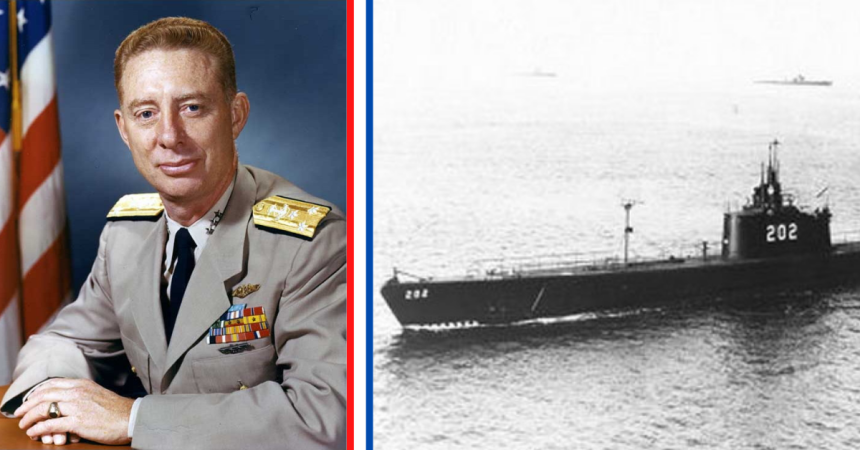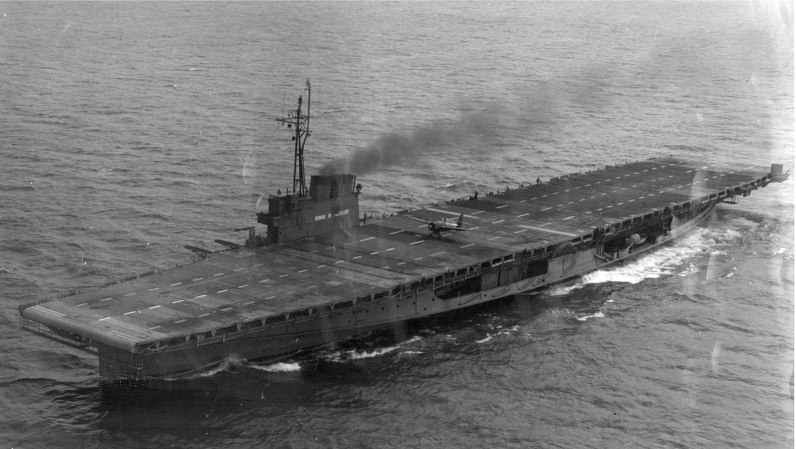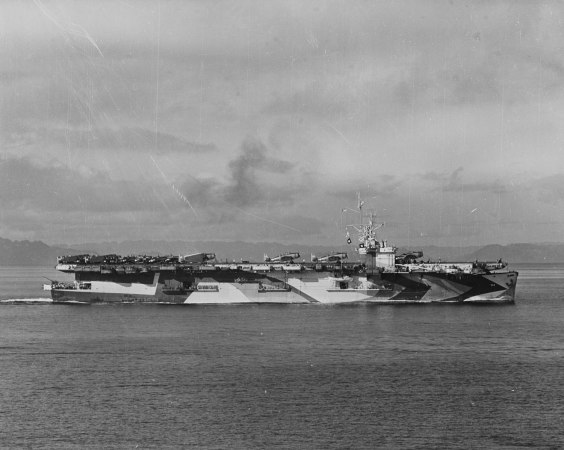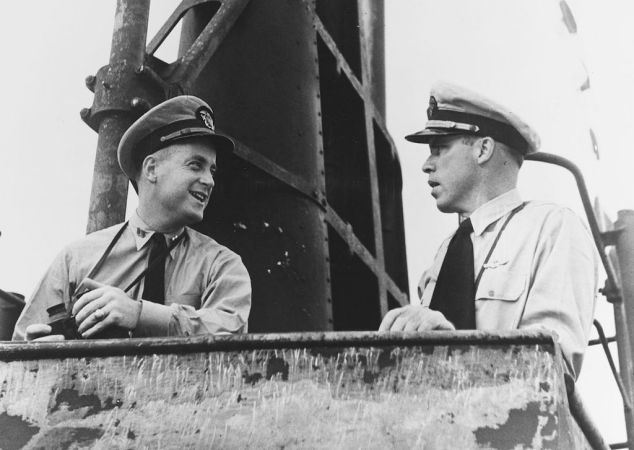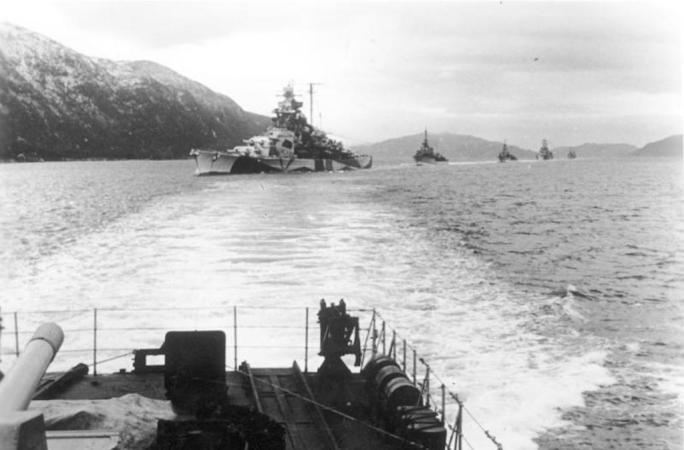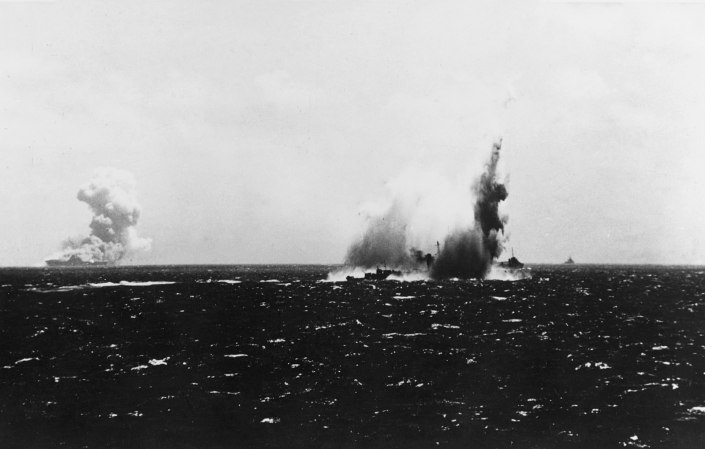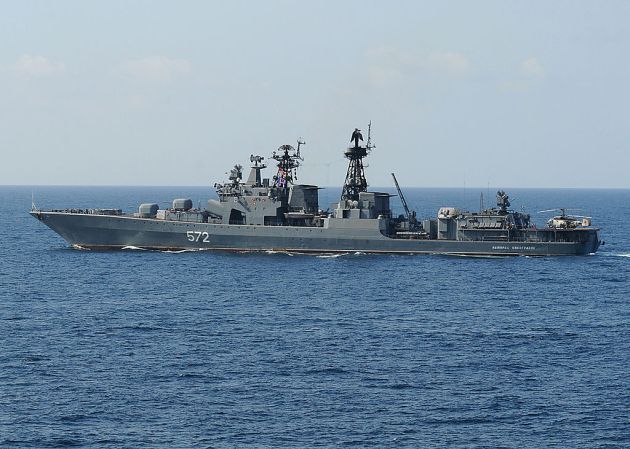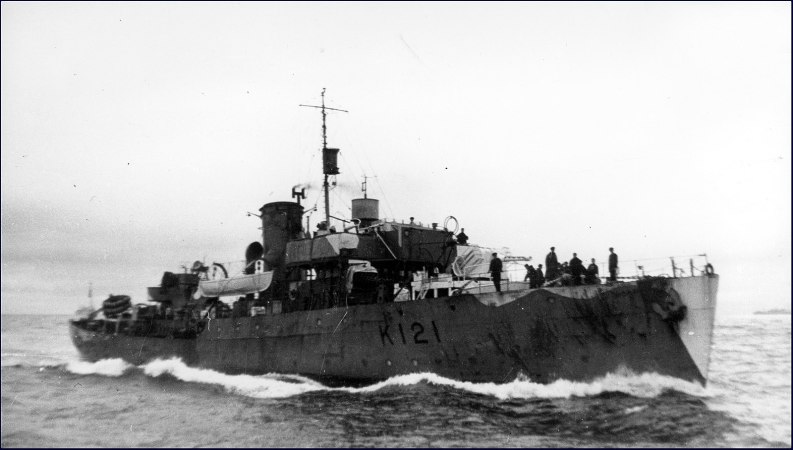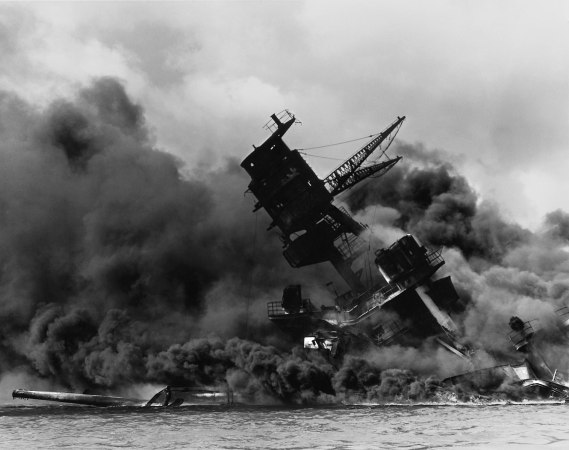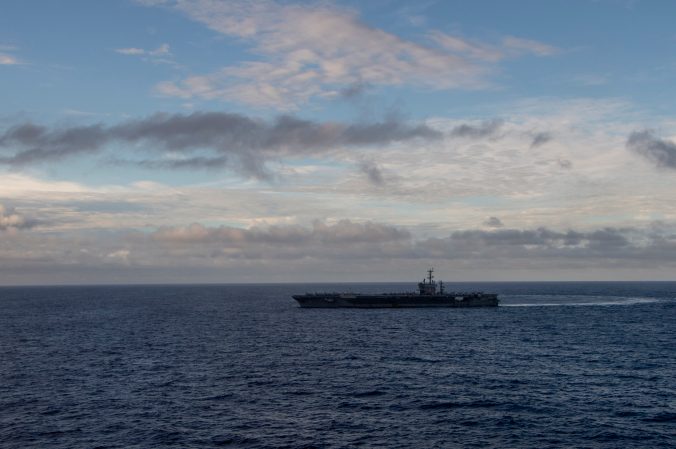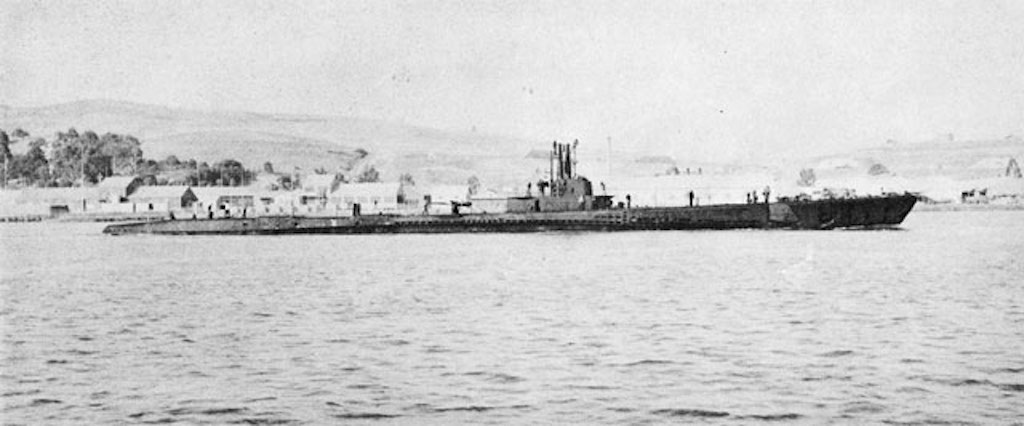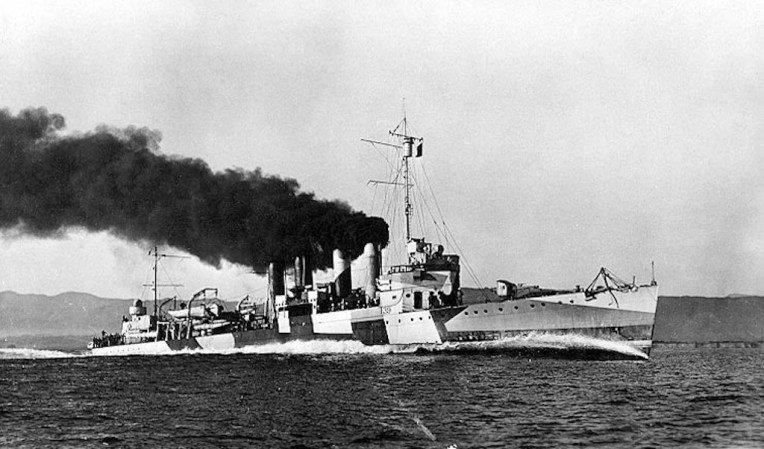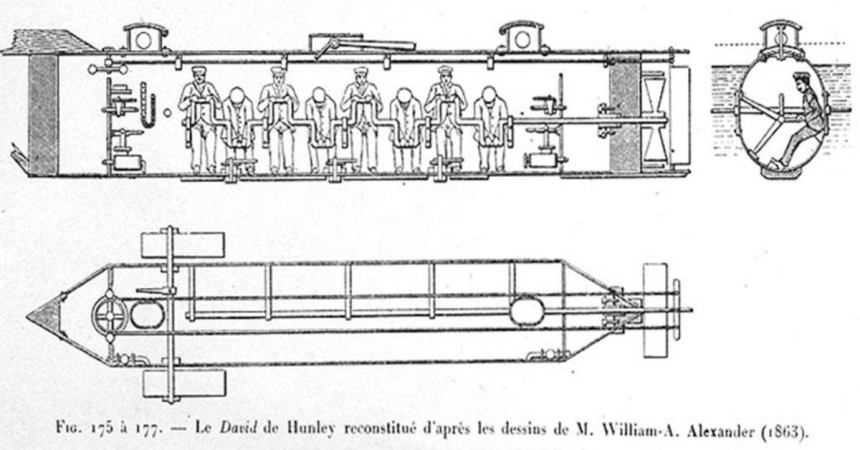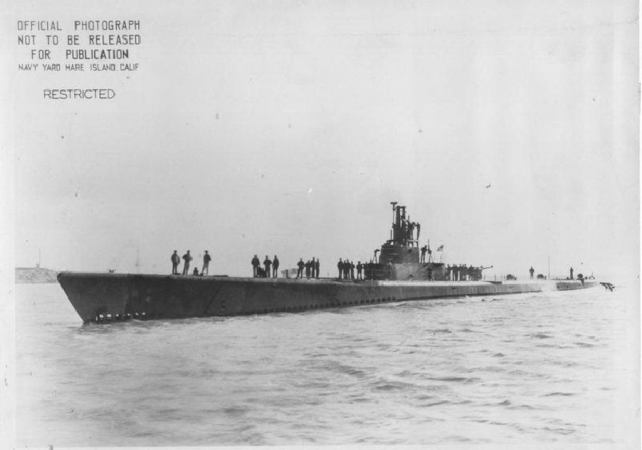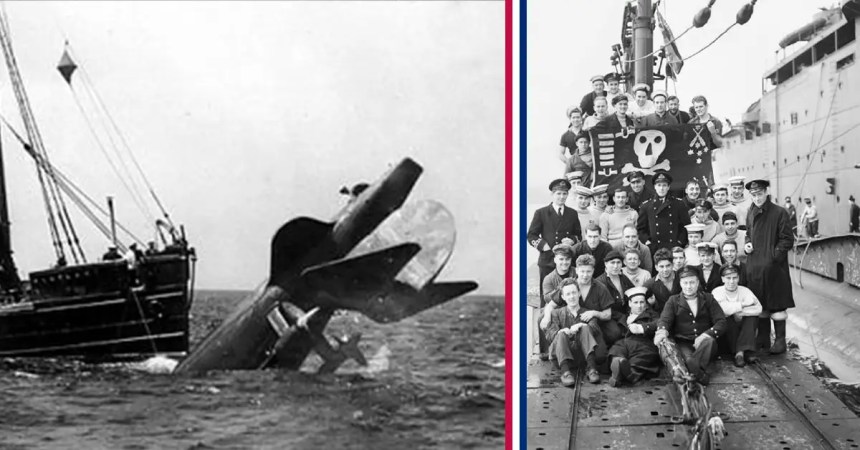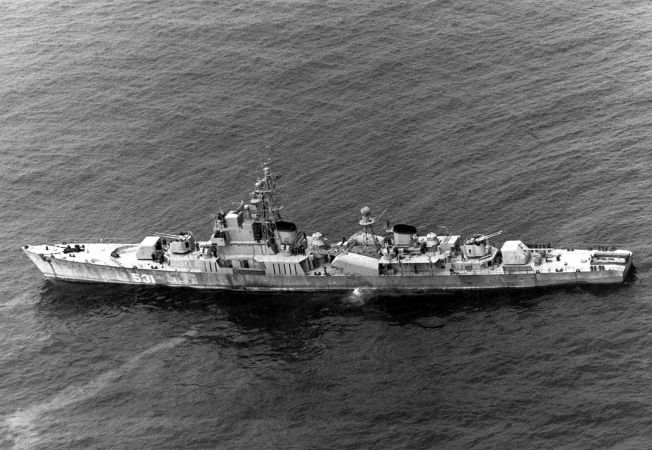Submarines and aircraft carriers embody the offensive spirits of their nations in very different ways. Aircraft carriers bring “4.5 acres of sovereign American territory” anywhere they go. And submarines bring death from beneath the waves.
Typically, submarines and carriers avoid each other. Submarines typically hunt for easier targets and carrier aircraft can’t pursue submarines effectively if they get under the water.
But every once in a while, a submarine gets a real chance at sinking an aircraft carrier and will risk the boat to do so. Here are nine times, all in World War II, that it worked out for the submarine:
HMS Courageous in December 1939

HMS Courageous led an anti-submarine patrol in September 1939 with four destroyers. On September 17, while two of her destroyers were assisting a stricken merchant ship, the German submarine U-29 was bearing down on the carrier when it turned into the wind. That turn presented the side of the ship to the submarine and U-29 launched three torpedoes into the carrier. The carrier quickly sank with 519 of the sailors.
HMS Ark Royal in November 1941
A legend of early World War II, HMS Ark Royal helped sink the Bismarck. Germany kept claiming they had sank the Ark Royal, falsely, until November 1941. German submarine U-81 spotted the carrier headed into Gibraltar and slipped a torpedo into the starboard side. The over 300-square foot hole doomed the carrier, but well-organized damage control and evacuation resulted in just one sailor perishing, Able Seaman Edward Mitchell.
HMS Audacity in December 1941
HMS Audacity was in Gibraltar when HMS Ark Royal sank nearby. Just weeks later, Audacity provided air cover for a convoy headed across the Atlantic and found herself in a pitched battle with a U-boat wolfpack. The battle raged for over four days before a merchant vessel fired off a star shell as another ship sank. The star shell silhouetted the Audacity for sub U-751 which fired 6 torpedoes, one of which struck the aviation fuel tank. 73 sailors died in the sinking.
USS Yorktown in June 1942

The USS Yorktown did the Lord’s work at the Battle of Midway. After suffering heavy damage at the Battle of the Coral Sea, the Yorktown underwent rushed repairs at Pearl Harbor and sailed back out just three days later. The Yorktown helped outnumbered American ships ambush the Japanese fleet at Midway, leading to four Japanese carriers sinking. But Yorktown took more damage and limped out of the battle.
It had no working boilers and was listing heavily when Japanese submarine I-168 slipped through the destroyer screen protecting it and hit the ship with torpedoes, sinking it and an escorting destroyer.
HMS Eagle in August 1942
During Operation Pedestal, HMS Eagle and Convoy WS21S were spotted by Italian forces. Axis attacks came fast and heavy after that, and German U-boat U-73 fired a spread of four torpedoes that struck and doomed the carrier. 160 sailors died in the August 1942 attack and sinking.
USS Wasp in September 1942

The USS Wasp was sailing reinforcements to the invasion of Guadalcanal on September 15, 1942. The ship’s air arm patrolled for submarine and aerial threats, downing a Japanese plane. But they missed the Japanese submarine I-19 which managed to send a spread of four torpedoes into the carrier. The ship was devastated by the hits, and its crew was forced to abandon it. Over 170 sailors died.
IJN Chuyo in December 1943
The IJN Chuyo was, ironically, carrying American prisoners from the defeated submarine USS Sculpin when Sculpin’s sister ship, USS Sailfish, got intelligence of where Chuyo would be. Sailfish moved into position and ambushed Chuyo with a spread of four torpedoes where two found the mark. As detailed in the upcoming book, Strike of the Sailfish, some Sculpin survivors were able to make it out of their second sinking in just weeks and survived the war.
USS Block Island in May 1944
Ironically, USS Block Island was a pioneer of anti-submarine warfare in the Atlantic but then became the only American carrier sank in the Atlantic. She sank or helped sink four German submarines 1943 to 1944. But on May 29, 1944, the submarine U-549 torpedoed and sank the carrier.
IJN Shinano in November 1944
The IJN Shinano has the dubious honor of being the largest warship ever sunk by an enemy submarine, and it suffered that fate on its maiden voyage. It launched from Japan on November 28, 1944, and it ran into the USS Archerfish the very next day. Shinano spotted the sub and attempted to escape. But after overheating its bearings, Shinano attempted a zigzag that put it in perfect firing position for Archerfish.
Archerfish fired six torpedoes and doomed Shinano. Several thousand rivets broke free of the ship’s internal compartments, allowing flooding to quickly move between rooms and chambers. The ship went down fast with no lifeboats and few survivors.
Logan Nye was an Army journalist and paratrooper in the 82nd Airborne Division. Now, he’s a freelance writer and live-streamer. In addition to covering military and conflict news at We Are The Mighty, he has an upcoming military literacy channel on Twitch.tv/logannyewrites.



